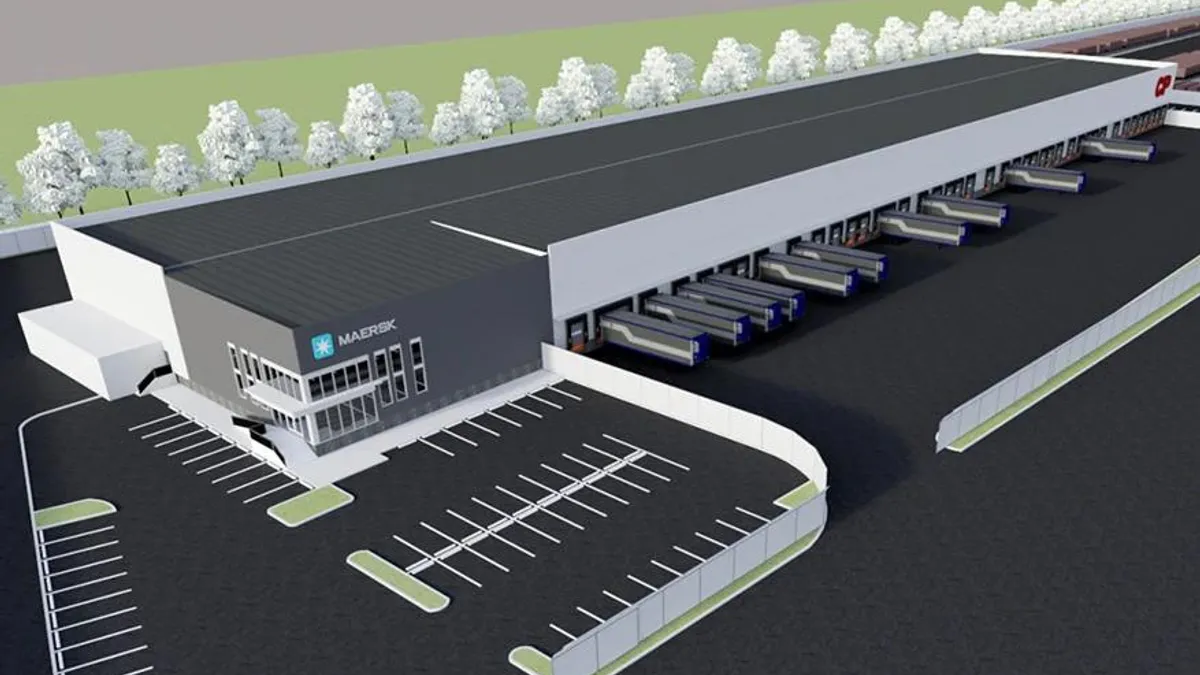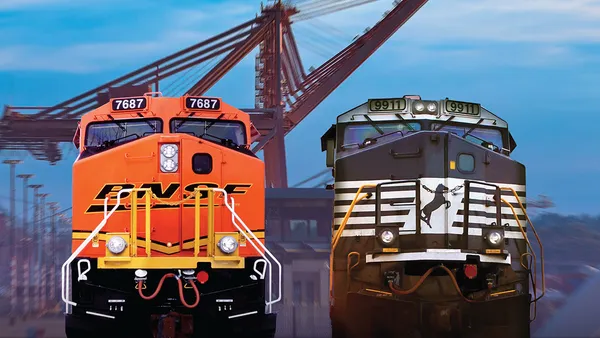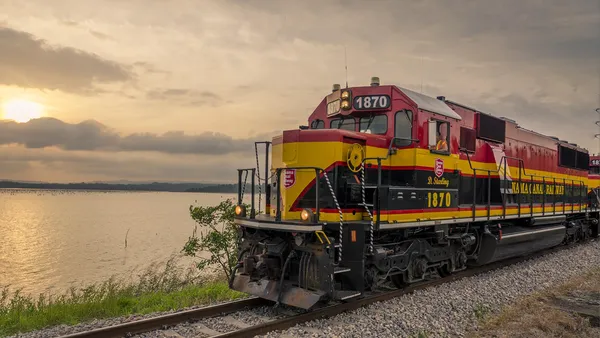Dive Brief:
- Maersk and Canadian Pacific will build and operate a transload and distribution facility in Vancouver, British Columbia, according to an announcement Tuesday. It is slated to be operational in 2021.
- Canadian Pacific will shuttle containers to and from port terminals, taking the reliance off of trucks, according to the announcement. And because the facility will be an expansion of Canadian Pacific's intermodal center, the rail infrastructure is already in place, Maersk said.
- "We can now offer more responsiveness to the pace of business by giving supply chain leaders more control of order timing/fulfillment through inland routing flexibility, better velocity gained from one day savings of rail versus truck and cost savings through seamless transload operations into domestic 53’ trailers," Omar Shamsie, president of Maersk Canada, said in a statement.
Dive Insight:
The aim with the Maersk-Canadian Pacific partnership is "to simplify the current situation" and reduce "multi-modal handoffs," Shamsie said, referring to an environment with booming e-commerce and high spot rates in the trucking market.
The reduction in handoffs is part of Maersk's long-term strategy to go beyond ocean shipping and become an integrated logistics company with end-to-end services — a tactic the company has been very public about and that guides its reorganizations, acquisitions, divestments and investments.
The effect of this approach is already beginning to show up in the company's earnings. Maersk's $545 million acquisition of U.S.-based warehousing and distribution company Performance Team helped to boost its logistics business in Q2. Earnings in logistics and services improved due to margin optimization in intermodal and was supported by the acquisition of Performance Team, according to Maersk's latest earnings report. Though the pandemic did hit the company's intermodal business, profitability increased.
According to Maersk, the new transload and distribution facility plays into another of its goals: sustainability. The company is aiming to achieve full decarbonization by 2050, having already reduced emissions per TEU-kilometer by nearly 42% from a 2008 baseline. Because the facility in Vancouver will rely on rail, it will create "less truck emissions," Shamsie said in a statement.
The absence of trucks could also speed turn times. Canadian Pacific is one of three Class I railroads that serve the Port of Vancouver, and it has on-dock rail facilities there. That eliminates the processes of finding chassis and booking truck appointments at the port.
Shipper demand for freight movement via rail is evident in data from the Association of American Railroads. Average weekly carloads originating in Canada have been trending upward since May.
Volumes at the Port of Vancouver have been hampered by the coronavirus. The port reported Sept. 3 that overall cargo decreased in the first half of 2020 by 1.1% YoY. However, it also reported new mid-year records for bulk and containerized grain, foreign tonnage, and foreign exports.
The volumes have led to tight warehouse capacity this year in Vancouver, according to the Maersk news release. The transload facility eliminates the need for long-term storage space near the port, moving freight from one mode to another onward to its next destination.













